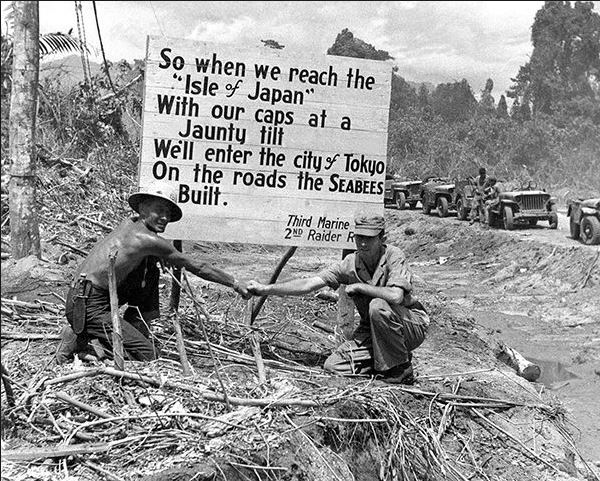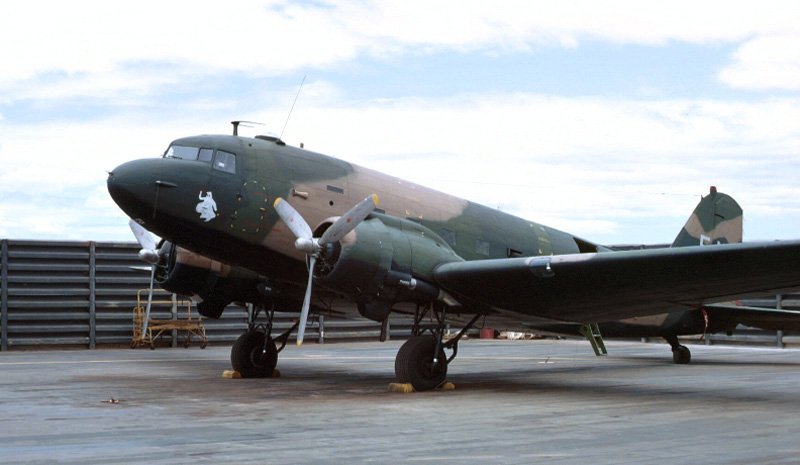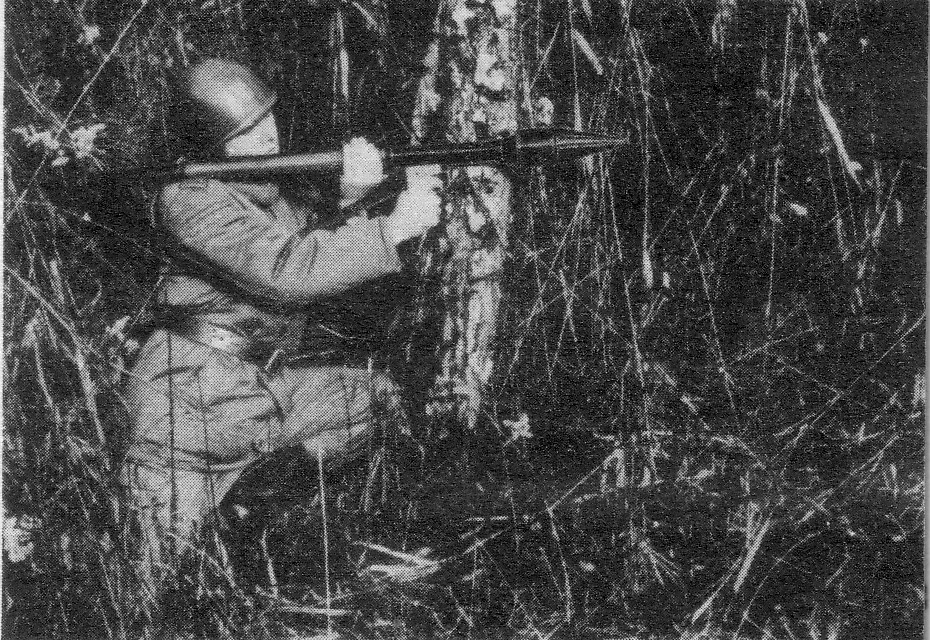|
An Hoa Combat Base
An Hòa Combat Base (also known as Đức Dục) is a former U.S. Marine Corps and Army of the Republic of Vietnam (ARVN) base west of Hội An in Quảng Nam Province, Vietnam. History The base was located approximately 28 km west of Hội An and 4 km west northwest of the Mỹ Sơn temple complex, near to the Tỉnh Yên River ( Thu Bồn River) and the An Hòa industrial complex. An Hòa was located southeast of a major Vietcong (VC)/People's Army of Vietnam (PAVN) base area known as the Arizona Territory across the Vu Gia River. The base was first used by the Marines in January 1966 during Operation Mallard when the 1st Battalion, 12th Marines established a firebase there while the 1st Battalion, 3rd Marines and a Company from the 2nd Battalion, 9th Marines swept the surrounding area. On 20 April 1966 the Marines returned to An Hòa on Operation Georgia, the 12th Marines reestablished a firebase while the 3rd Battalion 9th Marines provided security, the base would ... [...More Info...] [...Related Items...] OR: [Wikipedia] [Google] [Baidu] |
3d Marine Division (United States)
The 3rd Marine Division is a division of the United States Marine Corps based at Camp Courtney, Marine Corps Base Camp Smedley D. Butler in Okinawa, Japan. It is one of three active duty infantry divisions in the Marine Corps and together with the 1st Marine Aircraft Wing (1stMAW) and the 3rd Marine Logistics Group (3rd MLG) forms the III Marine Expeditionary Force (III MEF). The division was first formed during World War II and saw four years of continuous combat in the Vietnam War. Today, elements of the 3rd Marine Division are continuously forward deployed and forward postured to carry out the US Government's mission of a Free and Open Indo-Pacific in conjunction with its sister services. Subordinate units * List of Marine Corps battalions#Headquarters battalions, Headquarters Battalion * 3rd Marine Littoral Regiment * 4th Marine Regiment (United States), 4th Marine Regiment (Infantry) * 12th Marine Regiment (United States), 12th Marine Regiment (Artillery) * 3rd Recon ... [...More Info...] [...Related Items...] OR: [Wikipedia] [Google] [Baidu] |
Operation Macon
Operation Macon was a US Marine Corps search and destroy operation in western Quảng Nam Province, lasting from 4 July to 28 October 1966. Prelude Following the conclusion of Operation Georgia on 10 May, the 3rd Battalion, 9th Marines#Vietnam War, 3rd Battalion, 9th Marines remained at An Hoa Combat Base to provide security for the An Hoa Industrial Complex. On 1 July a squad leader from the Viet Cong (VC) 1st Company, R-20 ''Doc Lap'' Battalion, Chieu Hoi, surrendered to Marine forces and revealed that his unit was located south of the Thu Bồn River and east of An Hoa Base where they were preparing defenses to engage any Marine forces that might enter the area. Further intelligence indicated that the VC were armed with heavy weapons including 5 DShK, 12.7mm machine guns, 3 81mm mortars and 57mm recoilless rifles. Aerial reconnaissance by VMO-2#Vietnam War, VMO-2 confirmed that the VC were entrenched south of the Thu Bồn. On 4 July two companies of the R-20 Battalion moved we ... [...More Info...] [...Related Items...] OR: [Wikipedia] [Google] [Baidu] |
Douglas AC-47 Spooky
The Douglas AC-47 Spooky (also nicknamed "Puff, the Magic Dragon") was the first in a series of fixed-wing gunships developed by the United States Air Force during the Vietnam War. It was designed to provide more firepower than light and medium ground-attack aircraft in certain situations when ground forces called for close air support. Design and development The AC-47 was a United States Air Force (USAF) C-47, (the military version of the DC-3) that had been modified by mounting three 7.62 mm General Electric miniguns to fire through two rear window openings and the side cargo door, all on the left (pilot's) side of the aircraft, to provide close air support for ground troops. Other armament configurations could also be found on similar C-47-based aircraft around the world. The guns were actuated by a control on the pilot's yoke whereby he could control the guns either individually or together, although gunners were also among the crew to assist with gun failures and si ... [...More Info...] [...Related Items...] OR: [Wikipedia] [Google] [Baidu] |
South Vietnamese Popular Force
The South Vietnamese Popular Force ( vi, nghĩa quân, PF) (originally the Self-Defense Corps) was a part-time local militia of the Army of the Republic of Vietnam (ARVN) during the Vietnam War. The South Vietnamese Popular Force mainly protected homes and villages in South Vietnam from attacks by the Viet Cong (VC) and later the People's Army of Vietnam (PAVN). The Popular Force resembled the Local Force and village- guerrilla level component of the VC, while the Regional Force was a full-time force available for operations within a province. The Popular Force was initially very poorly-trained and equipped, but often bore the brunt of PAVN/VC attacks. PF and Regional Force units were responsible for inflicting an estimated 30% of the total PAVN/VC casualties throughout the war, and were much more capable of fulfilling ambush and small-unit movement, reconnaissance and detection roles than larger, slow-moving conventional forces. History A survey in May 1957 had revealed tha ... [...More Info...] [...Related Items...] OR: [Wikipedia] [Google] [Baidu] |
Combined Action Program
The Combined Action Program was a United States Marine Corps counterinsurgency tools during the Vietnam War. It was widely remembered by the Marine Corps as effective. Operating from 1965 to 1971, it placed a thirteen-member Marine rifle squad, augmented by a U.S. Navy Corpsman and strengthened by a Vietnamese militia platoon of older youth and elderly men, in or adjacent to a rural Vietnamese hamlet. In most cases, the Popular Forces militia members (Nghia Quan) were residents of the hamlet who were either too young or too old to be drafted into the Army of the Republic of Vietnam (ARVN) or the Regional Forces (Dia Phuong Quan). The entire unit of American Marines and Popular Forces militia members together was designated as a Combined Action Platoon (CAP). The program was said to have originated as a solution to one Marine infantry battalion's problem of an expanding Tactical Area of Responsibility (TAOR). The concept of combining a squad of Marines with local (PFs) and assign ... [...More Info...] [...Related Items...] OR: [Wikipedia] [Google] [Baidu] |
LVTP-5
The LVTP-5 (landing vehicle, tracked, personnel 5) is a family of amphibious armored fighting vehicles used by the Philippine Marine Corps and, formerly, the United States Marine Corps. It was designed by the BorgWarner company and built by FMC (Food Machinery Corporation) along with a few other companies. It was first accepted into service in 1956. Some 1,124 basic units were produced, plus the specialist variants, and many saw action in the Vietnam War. History The LVTP-5 was an evolution of the ''LVT-1'' to ''LVT-4'' World War II-era landing vehicle tracked series, but was considerably larger and could carry 30-34 combat-armed troops. A smaller design based on the M59 APC was also produced as the ''LVT-6'', but only a few were built. The LVTP-5 was replaced in service by the '' LVT-7'' family. The most common type was the LVTP-5, an armored personnel carrier, with mine-sweeper, command, recovery and fire support variants, the latter mounted a 105 mm howitzer. An anti-ai ... [...More Info...] [...Related Items...] OR: [Wikipedia] [Google] [Baidu] |
Beehive Anti-personnel Round
Beehive was a Vietnam war era anti-personnel round packed with metal flechettes fired from an artillery gun most popularly deployed during that conflict. It is also known as flechette rounds or their official designation, antipersonnel-tracer (APERS-T). Typically, artillery gunners fire using indirect fire, firing at targets they cannot see by line of sight, with information provided by a forward observer. However, during the Vietnam War, there was a demand for a munition that could be fired directly at enemy troops, in cases where an artillery unit was attacked. History The flechette rounds were developed under a contract administered by Picatinny Arsenal and let to the Whirlpool Corporation in April 1957. The contract was named the "Beehive Program" referring to the way the flechettes were compartmentalized and stacked, looking like the traditional image of a conical beehive. It was commonly assumed by users in the service that the term referred to a supposed 'buzzing' sound it ... [...More Info...] [...Related Items...] OR: [Wikipedia] [Google] [Baidu] |
RPG-2
The RPG-2 ( Russian: РПГ-2, Ручной противотанковый гранатомёт, ''Ruchnoy Protivotankovy Granatomyot''; English: "hand-held antitank grenade launcher") is a man-portable, shoulder-fired anti-tank weapon that was designed in the Soviet Union. It was the first successful anti-tank weapon of its type, being a successor to the earlier and unsuccessful RPG-1. The RPG-2 offered better range and armor penetration, making it useful against late and post-World War II tanks, in contrast to the RPG-1 that had only marginal utility. The basic design and layout was further upgraded to produce the ubiquitous RPG-7. History Studying German and US anti-tank rocket designs, in 1944 the Soviets began development of the RPG-1 with the goal of combining the best features of the German '' Panzerfaust'' single shot recoilless weapon with the US Bazooka rocket launcher. Propelled by a 30 mm cartridge, the high explosive anti-tank (HEAT) round could penetrate a ... [...More Info...] [...Related Items...] OR: [Wikipedia] [Google] [Baidu] |
Lockheed C-130 Hercules
The Lockheed C-130 Hercules is an American four-engine turboprop military transport aircraft designed and built by Lockheed (now Lockheed Martin). Capable of using unprepared runways for takeoffs and landings, the C-130 was originally designed as a troop, medevac, and cargo transport aircraft. The versatile airframe has found uses in other roles, including as a gunship ( AC-130), for airborne assault, search and rescue, scientific research support, weather reconnaissance, aerial refueling, maritime patrol, and aerial firefighting. It is now the main tactical airlifter for many military forces worldwide. More than 40 variants of the Hercules, including civilian versions marketed as the Lockheed L-100, operate in more than 60 nations. The C-130 entered service with the U.S. in 1956, followed by Australia and many other nations. During its years of service, the Hercules has participated in numerous military, civilian and humanitarian aid operations. In 2007, the C-130 ... [...More Info...] [...Related Items...] OR: [Wikipedia] [Google] [Baidu] |
Fairchild C-123 Provider
The Fairchild C-123 Provider is an American military transport aircraft designed by Chase Aircraft and then built by Fairchild Aircraft for the U.S. Air Force. In addition to its USAF service, which included later service with the Air Force Reserve and the Air National Guard, it also went on to serve most notably with the U.S. Coast Guard and various air forces in Southeast Asia. During the War in Vietnam, the C-123 was used to deliver supplies, to evacuate the wounded, and also used to spray Agent Orange. Design and development The C-123 Provider was designed originally as an assault glider aircraft for the United States Air Force (USAF) by Chase Aircraft as the XCG-20 (Chase designation MS-8 Avitruc)Gunston 1980a, p. 170. Two powered variants of the XCG-20 were developed during the early 1950s, as the XC-123 and XC-123A. The only difference between the two was the type of engines used. The XC-123 used two Pratt & Whitney R-2800-23 air-cooled radial piston engines, whil ... [...More Info...] [...Related Items...] OR: [Wikipedia] [Google] [Baidu] |
De Havilland Canada DHC-4 Caribou
The de Havilland Canada DHC-4 Caribou (designated by the United States military as the CV-2 and later C-7 Caribou) is a Canadian specialized cargo aircraft with short takeoff and landing (STOL) capability. The Caribou was first flown in 1958 and although mainly retired from military operations, is still in use in small numbers as a rugged "bush" aircraft. The design was further developed as the de Havilland Canada DHC-5 Buffalo, adding turboprop engines and other changes that further improved its short-field performance to the point where it competes with light aircraft even with a full load. Design and development The de Havilland Canada company's third STOL design was a big increase in size compared to its earlier DHC Beaver and DHC Otter, and was the first DHC design powered by two engines. The Caribou was similar in concept in that it was designed as a rugged STOL utility aircraft. The Caribou was primarily a military tactical transport that in commercial service ... [...More Info...] [...Related Items...] OR: [Wikipedia] [Google] [Baidu] |
Naval Mobile Construction Battalion 4
Naval Mobile Construction Battalion 4 (NMCB 4) is a Navy Seabee battalion homeported at Port Hueneme, California. Nicknamed the "Pioneers", it is the first of the many CBs created after the original three. The Battalion's current insignia first appeared on its 1953–55 cruisebook. History WWII On 11 June 1942 Naval Construction Battalion 4 was commissioned at NCTC Camp Allen, Norfolk, VA with 32 officers and 1,073 enlisted men. The following month the unit received its military training at Camp Bradford prior to boarding a train for Port Hueneme, Ca. In July the battalion was sent to Bremerton, Washington for transport to Dutch Harbor, Alaska.Naval Construction Battalion 4, Unit History NHHC, Seabee Museum, Port Hueneme, C/ref> Four was the first Construction Battalion in the sector but, was soon joined by CBs 8, 13, 21, and 22. The civilian contractor had been awarded 28 defense contracts of which eight had been completed before the Seabees arrived and took over. Up ... [...More Info...] [...Related Items...] OR: [Wikipedia] [Google] [Baidu] |









